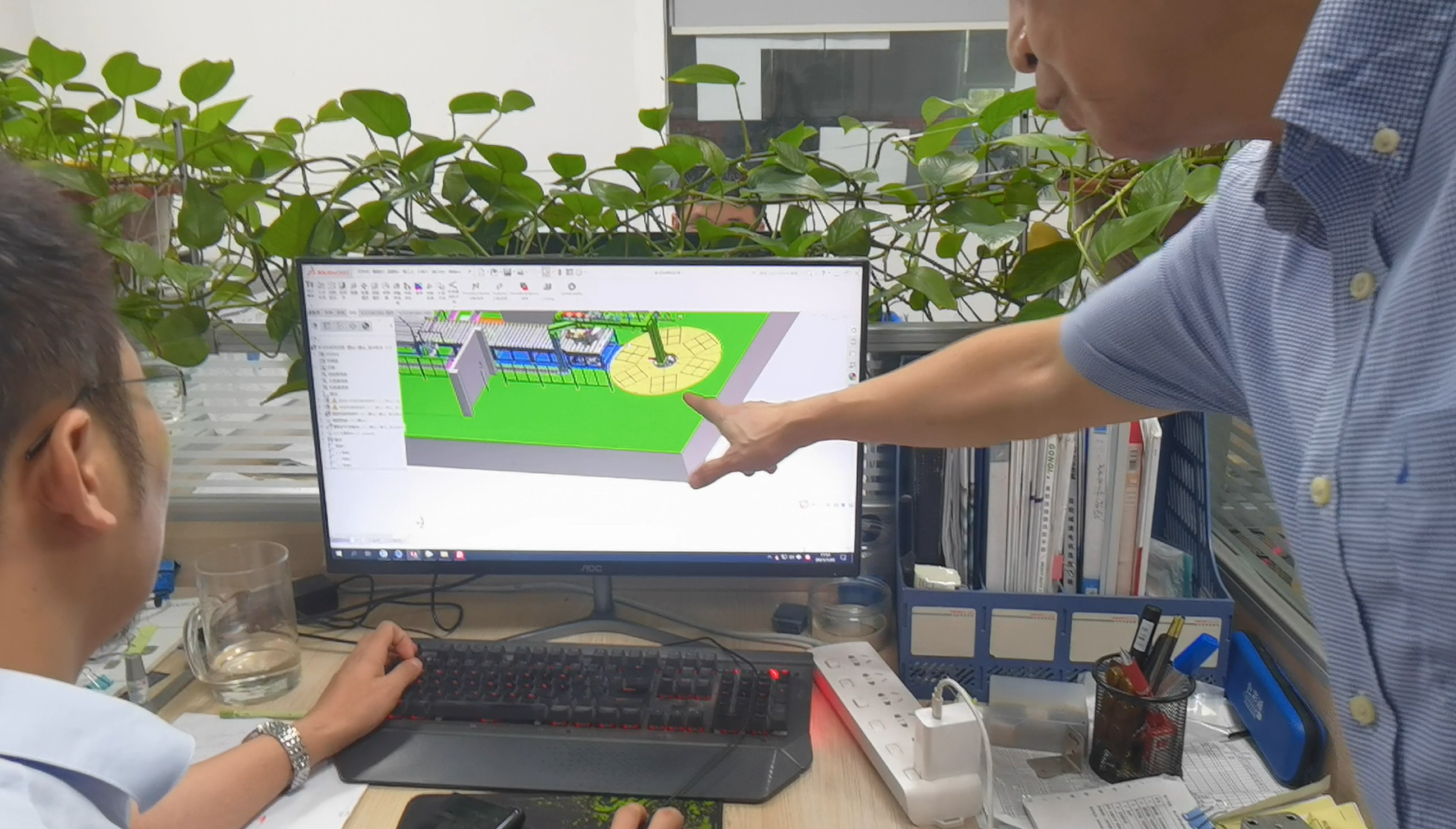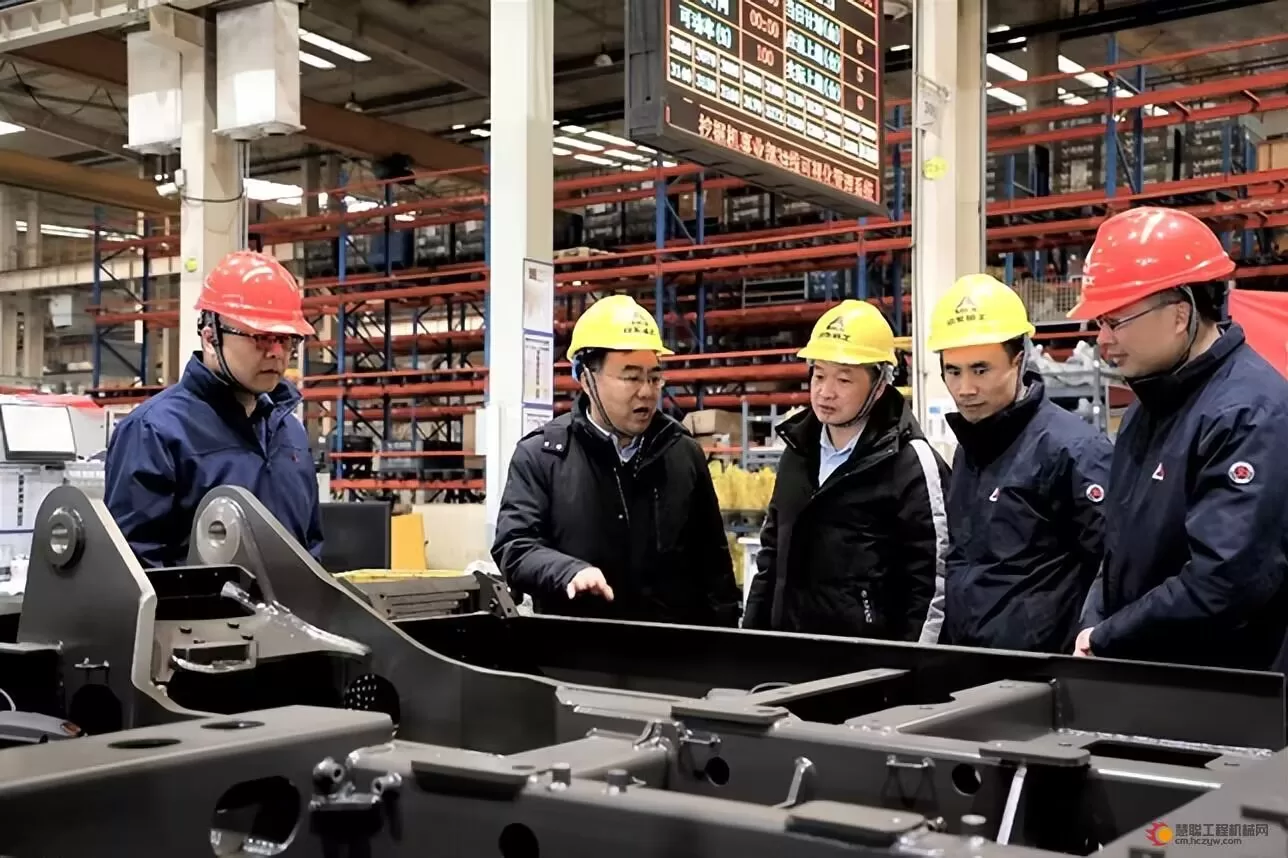The production of a coil packing line requires a detailed and well-executed quality assurance system that incorporates the advanced machinery and technological components outlined in the FHOPEPACK document. In this guide, we aim to enhance the understanding of quality processes, ensuring that every stage of the coil packing line maintains operational consistency and meets high-quality standards. Below is a breakdown of key elements in the production process, along with relevant examples, machine details, and structural considerations.
A robust Quality Management System (QMS), aligned with ISO 9001:2015 standards, is critical to the coil packing line's success. This system goes beyond basic protocol adherence; it ensures the entire production process maintains quality objectives that meet both customer needs and internal business goals. Every machine within the FHOPEPACK coil packing line, whether it's the turnstile or the automatic strapping machine, must meet rigorous quality benchmarks.
For instance, the coil wrapping machine relies on a highly precise PLC control system, which requires regular audits to verify correct programming of wrapping speeds and material tension. This ensures that coils are consistently packaged with minimal defects, lowering the risk of product damage.
These audits should also include critical performance checks on key components, like the conveyor systems and strapping stations, to identify and rectify any issues that could affect the operational efficiency and safety.
Designing a coil packing line starts with gathering customer specifications and performing a comprehensive risk assessment based on ISO 31000. This process helps identify and mitigate potential risks, such as hydraulic failure in the down-ender or tension inconsistencies in the wrapping machine.
For example, the Hydraulic Coil Down-Ender is equipped with a robust hydraulic system that rotates heavy steel coils (up to 20 tons per arm) from horizontal to vertical (eye-to-sky). Rigorous testing, including load simulations, ensures the machine can handle these tasks safely. Similarly, the Automatic Wrapping Machine undergoes simulations to evaluate its ability to handle various wrapping materials without damaging the coil. Fine-tuning the wrapping tension ensures that the coils are securely wrapped without being over-tightened or under-wrapped.
During the design phase of the coil strapping machine, mock-ups of the pneumatic system are created to ensure the strapping head provides sufficient tension to securely hold heavy coils in place during transport.
The Servo Motors used in the wrapping machine and the Hydraulic Pumps in the down-ender must be sourced from suppliers with proven track records, such as Bosch Rexroth or Siemens. These parts are essential for the precise movement and control of the machines.
The selection of reliable suppliers is crucial to ensuring the durability and performance of the materials and components used in the coil packing line, which must adhere to ISO standards. Each supplier is assessed based on their ability to deliver high-quality products, such as servo motors, hydraulic pumps, and sensors.
For example, the servo motors used in the wrapping machine and the hydraulic pumps in the down-ender are sourced from reputable brands like Bosch Rexroth and Siemens, ensuring precision and reliability. These parts are critical for maintaining the precise movement and control of the machines.
Upon arrival, all materials undergo strict quality inspections to confirm they meet specifications. For example, the steel used in the conveyor system is tested for durability and surface finish, ensuring it can support the weight of the coils without deforming or wearing prematurely.
Additionally, hydraulic cylinders in the down-ender are inspected for leaks and pressure stability before installation to ensure that the machine's lifting mechanism functions reliably.
Effective production planning is the foundation of a smooth-running coil packing line. This involves documenting every step, from installing hydraulic lifters to calibrating the tension control systems in the strapping and wrapping machines. Standard Operating Procedures (SOPs) guide each stage of production to ensure consistent quality.
Skilled technicians are assigned to key tasks, such as calibrating the sensors in the strapping machine or programming the PLC control systems. These technicians are trained to quickly identify and resolve potential issues during assembly, reducing downtime and ensuring machines are configured correctly.
During production, the Chain Conveyor System installation follows SOPs, which ensure the nylon-coated chains are aligned correctly. Proper alignment is critical when handling large steel coils, as misalignments could cause operational delays or damage.
For the coil wrapping machine, the rotary arms are precisely calibrated to adjust the overlap rate of the wrapping material, ensuring the process is both efficient and secure. Fine-tuning the rotating arm's speed helps maintain the integrity of the packaging.
.
Maintaining consistent quality in coil packing machinery production is essential. FHOPEPACK employs Statistical Process Control (SPC) to monitor key variables like component dimensions, torque, and performance during manufacturing. For instance, in the production of the chain conveyor system, SPC ensures precise tolerances for parts like the chain links and rollers, which are crucial for the smooth movement of coils.
An example of this is during the assembly of the conveyor system, where SPC is used to monitor the dimensions of the nylon-coated chain surfaces. Real-time monitoring helps detect deviations in the chain’s thickness or surface smoothness, enabling immediate adjustments to prevent coil jams or uneven movement. This not only minimizes defects but also reduces the need for rework.
Equipment maintenance is also vital for ensuring the longevity of the coil packing line. Adhering to ISO 13306 standards, preventive maintenance schedules are established for critical machinery like the hydraulic coil down-ender and the coil strapping machine. Routine inspections keep components such as hydraulic pumps, strapping tools, and tension control systems in optimal condition.
For example, regular lubrication of the hydraulic components in the down-ender helps prevent wear and tear, while calibrating the pneumatic motors in the strapping machine ensures the correct tension is applied to the steel straps. This reduces the risk of coil displacement during transport.
Calibration of measurement tools, guided by ISO 10012 standards, ensures accuracy in production. Instruments like calipers, load cells, and torque wrenches are routinely calibrated to maintain precision, especially in areas where exact force or tension is needed, such as the wrapping and strapping processes.
As an example, the load cells integrated into the coil weighing system are regularly calibrated to maintain a 1/3000 precision ratio, ensuring accurate weight measurements and preventing overloads during coil transportation.
Ensuring quality control throughout every phase of production is essential to maintaining the operational efficiency of the coil packing line. Inspections begin with incoming materials and components, such as the steel for the conveyor system or hydraulic parts for the down-ender.
For example, during an inspection, the steel used for the conveyor system is tested for both surface smoothness and durability. If the material does not meet required standards, it is rejected to prevent defects later in production.
In-process inspections are equally important. For instance, during the assembly of the automatic wrapping machine, technicians verify that the rotary arms and tension control systems are correctly installed and functioning properly. They inspect the rotation mechanism of the wrapping machine’s ring to ensure that the tension control system adjusts seamlessly to accommodate different coil sizes, preventing any miswrapping or material tears.
Final inspections and testing are conducted to confirm that each machine is fully operational before delivery. A test coil is often used to assess the wrapping machine’s functionality, including the overlap rate of the stretch film, ensuring that it meets customer-specified protection requirements. If discrepancies arise, adjustments are made before the machine is shipped.
Proper packaging is critical to protecting the coil packing machinery during transport. All machines are disassembled, and sensitive components, such as servo motors, hydraulic pumps, and electronic control panels, are packed according to ISO packaging standards.
For example, the servo motors in the coil wrapping machine are packed in shock-proof containers lined with foam padding to prevent damage from vibrations during transport. Additionally, these parts are sealed in moisture-proof packaging to guard against humidity.
Storage conditions are closely monitored to prevent rust or corrosion. For example, the hydraulic systems of the coil down-ender are coated with anti-corrosive oil and stored in a controlled environment to avoid moisture-related damage.
The logistics and delivery process is organized to ensure the machinery arrives on time and in perfect condition. Installation instructions are included with each machine to guide customers through the setup process.
For instance, when shipping the coil strapping machine, the pneumatic system is packed separately in a secured crate, along with clear instructions for reconnecting the system on-site.
In the event of non-conformities, it is crucial to identify and resolve issues promptly. Regular inspections help detect potential problems, such as sensor malfunctions or misaligned coil down-enders, before they escalate.
For example, during a routine check, a technician may discover that the coil down-ender is misaligned, traced back to improper hydraulic calibration. Immediate recalibration prevents further misalignment and ensures smooth operation during packaging.
Corrective actions are taken in line with ISO 9001:2015 guidelines, which include root cause analysis to prevent future occurrences. For example, if a strapping machine fails to apply the correct tension, the issue could be traced to a faulty pneumatic motor or misconfigured PLC program. Recalibrating the tension control system and documenting the steps ensures that the problem does not recur.
Customer feedback plays a vital role in improving coil packing machinery. After installation, feedback is collected through surveys, direct communication, and on-site visits. This input helps manufacturers understand how the equipment performs in real-world conditions and identifies areas for improvement, such as operational efficiency, safety, and maintenance.
For example, after a coil packing line was installed for a steel manufacturer, the customer suggested that the automatic strapping machine could benefit from faster tension adjustment. This feedback led to an upgrade in the tension control system, incorporating a more responsive servo-driven motor for quicker adjustments during high-speed production.
After-sales support is crucial for customer satisfaction. A dedicated service team assists clients with everything from initial setup and installation to ongoing maintenance and troubleshooting. Preventive maintenance programs are offered to reduce downtime and extend the life of the machines.
For instance, a customer in the aluminum coil packaging sector encountered issues with the rotary arm of their automatic wrapping machine due to frequent use. The FHOPEPACK service team provided remote diagnostic support, guiding the customer through the recalibration process. A follow-up visit was scheduled to replace arm bearings and perform preventive maintenance, restoring the machine to optimal performance.
Preventive maintenance also includes regular inspections, such as checking lubrication levels in hydraulic systems and verifying the calibration of load cells in conveyor systems. This proactive approach reduces technical problems, fosters customer trust, and encourages repeat business.
.
Continuous improvement is crucial for maintaining the quality and efficiency of the coil packing line. Regular internal audits assess the effectiveness of the Quality Management System (QMS), ensuring alignment with ISO 9001:2015 standards. These audits focus on critical areas such as the calibration of measurement devices and the performance of key systems like the wrapping machine’s control system, identifying areas that may require adjustments.
For example, an internal audit revealed frequent calibration issues in the tension control system of the automatic strapping machine, leading to inconsistent strap tension. As a corrective action, the production team upgraded the PLC control system and improved the sensor feedback loop, resulting in more reliable strapping performance in future models.
Management reviews are conducted periodically to evaluate overall system performance. These reviews often highlight areas requiring additional resources or process modifications, such as improving materials in machine components or addressing recurring maintenance issues. For instance, management may decide to switch to more durable hydraulic hoses or implement advanced servo motors for better precision in handling heavy coils.
Employee training plays a key role in maintaining high production standards. Continuous training ensures that staff stay up to date with the latest technologies and industry practices. This includes everything from safety protocol updates to ensuring that technicians can effectively calibrate the hydraulic systems in the coil down-ender.
Example: FHOPEPACK conducts regular training programs on operating the emergency stop features and inspecting protective guards on the coil wrapping machine. These sessions ensure compliance with ISO 45001 safety standards, enhancing operational safety across the line.
Environmental sustainability and workplace safety are critical priorities in the coil packing line production process. FHOPEPACK follows ISO 14001 standards to minimize waste and reduce the environmental impact of its operations. Materials like metal scraps from machining processes are recycled, while energy-efficient systems are used to reduce energy consumption throughout the production facility.
For instance, leftover steel pieces from the cutting process during the production of the chain conveyor system are collected and recycled, contributing to the company's waste reduction goals. Additionally, the use of energy-efficient motors in the conveyor system helps lower the carbon footprint of the operation.
FHOPEPACK also adheres to ISO 45001 health and safety management standards, conducting regular risk assessments to prevent accidents. The machines themselves, including the coil down-ender and wrapping machines, are equipped with safety features such as emergency stops, protective guards, and automated sensors. These systems halt machine operations immediately if they detect any obstruction or safety risk.
For example, the automatic coil wrapping machine is equipped with an infrared sensor that detects objects within its operational range. If triggered, the machine halts immediately, preventing potential injuries or damage. Similarly, the coil down-ender is fitted with safety shields to protect operators from accidental contact with rotating parts.
Ongoing incident reporting and regular safety audits ensure any safety concerns are addressed promptly, fostering a safe working environment for all staff.
Regular incident reporting and safety audits ensure that any safety concerns are addressed promptly, fostering a secure working environment for all staff involved in the coil packing line production.
A well-structured documentation system is essential for maintaining traceability and accountability throughout the coil packing line production process. FHOPEPACK’s ISO-compliant documentation ensures that every stage, from component inspections to final product testing, is recorded and easily accessible for review. This documentation supports the company’s Quality Management System (QMS) and helps identify and resolve any issues efficiently.
For instance, during the assembly of the hydraulic coil down-ender, calibration logs are meticulously maintained to verify that the hydraulic system is operating within the specified pressure limits. These logs serve as a reference point for future audits or maintenance reviews.
A robust document control system ensures that all operational documents, such as Standard Operating Procedures (SOPs) and process flowcharts, are regularly updated to prevent the use of outdated materials. This helps maintain consistency in production.
Example: If the SOP for the automatic wrapping machine’s tension control system is updated, the document control system ensures that only the latest version is accessible on the production floor. This avoids confusion and guarantees that all operators are following the correct procedures, ensuring uniformity in production.
Accurate, up-to-date records not only demonstrate adherence to ISO requirements during customer reviews and audits but also provide a clear production history that supports continuous improvement efforts.
Accurate and up-to-date records also demonstrate adherence to ISO requirements during customer reviews and audits, enhancing transparency and providing a clear production history that supports continuous improvement efforts.




